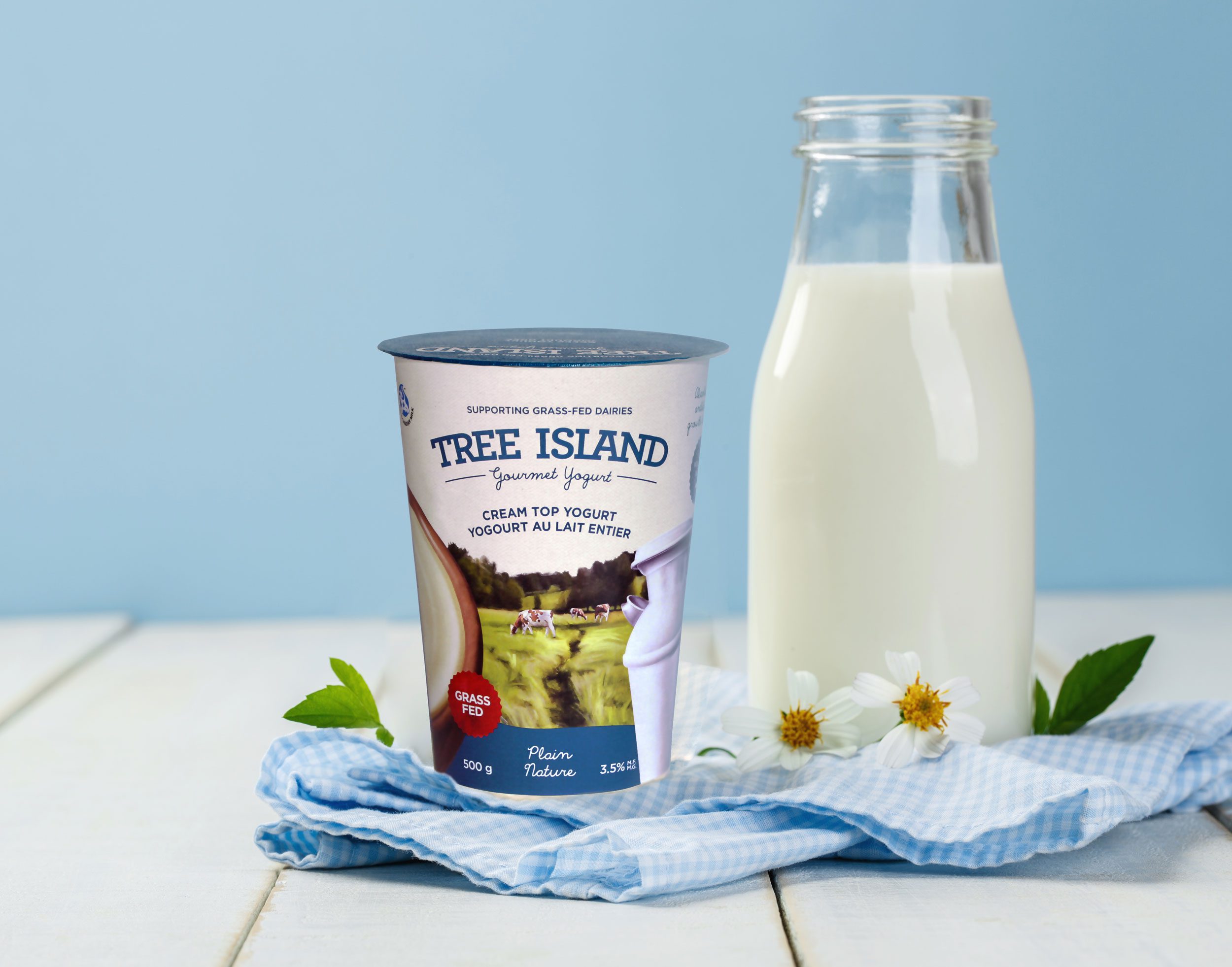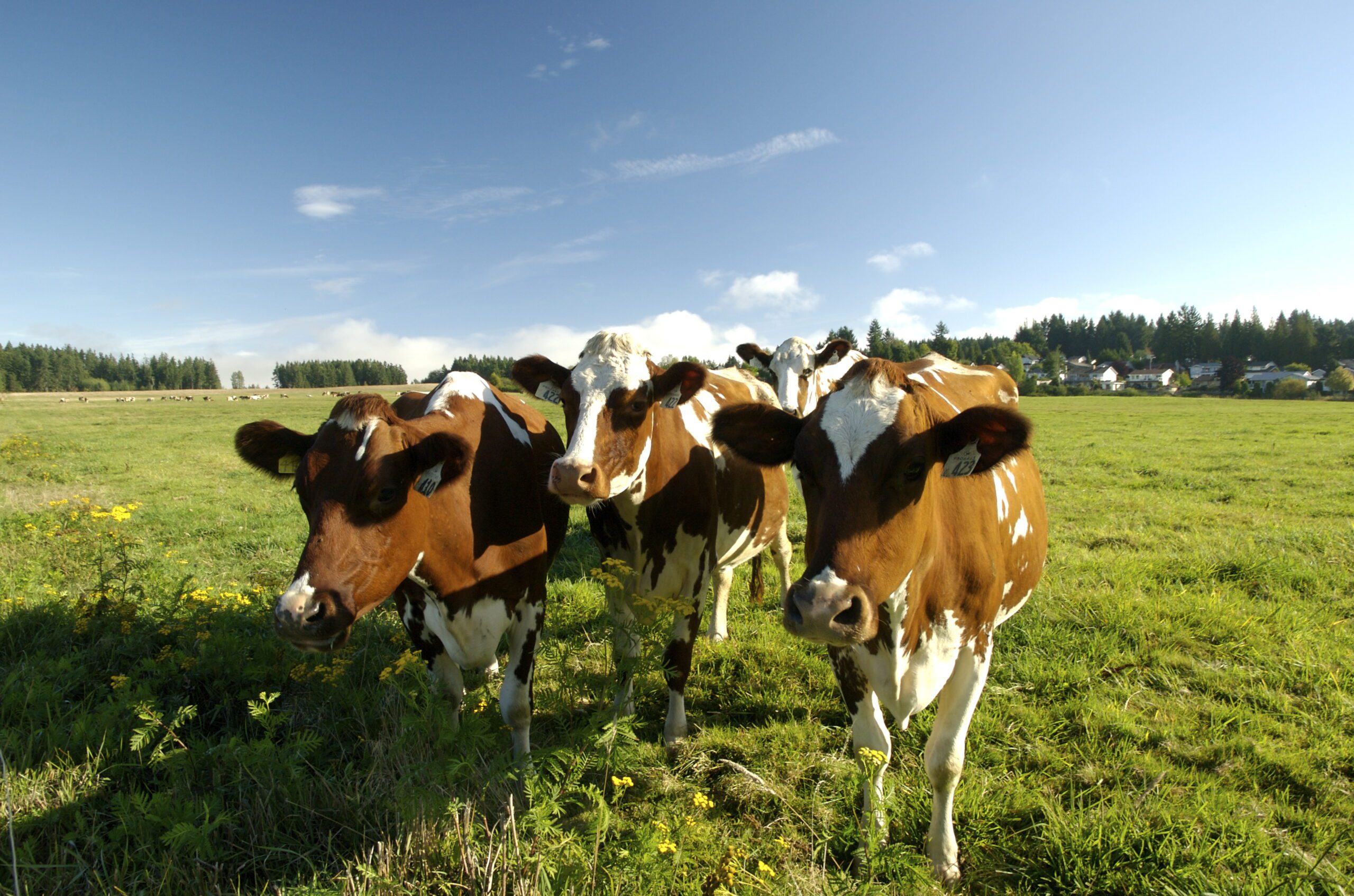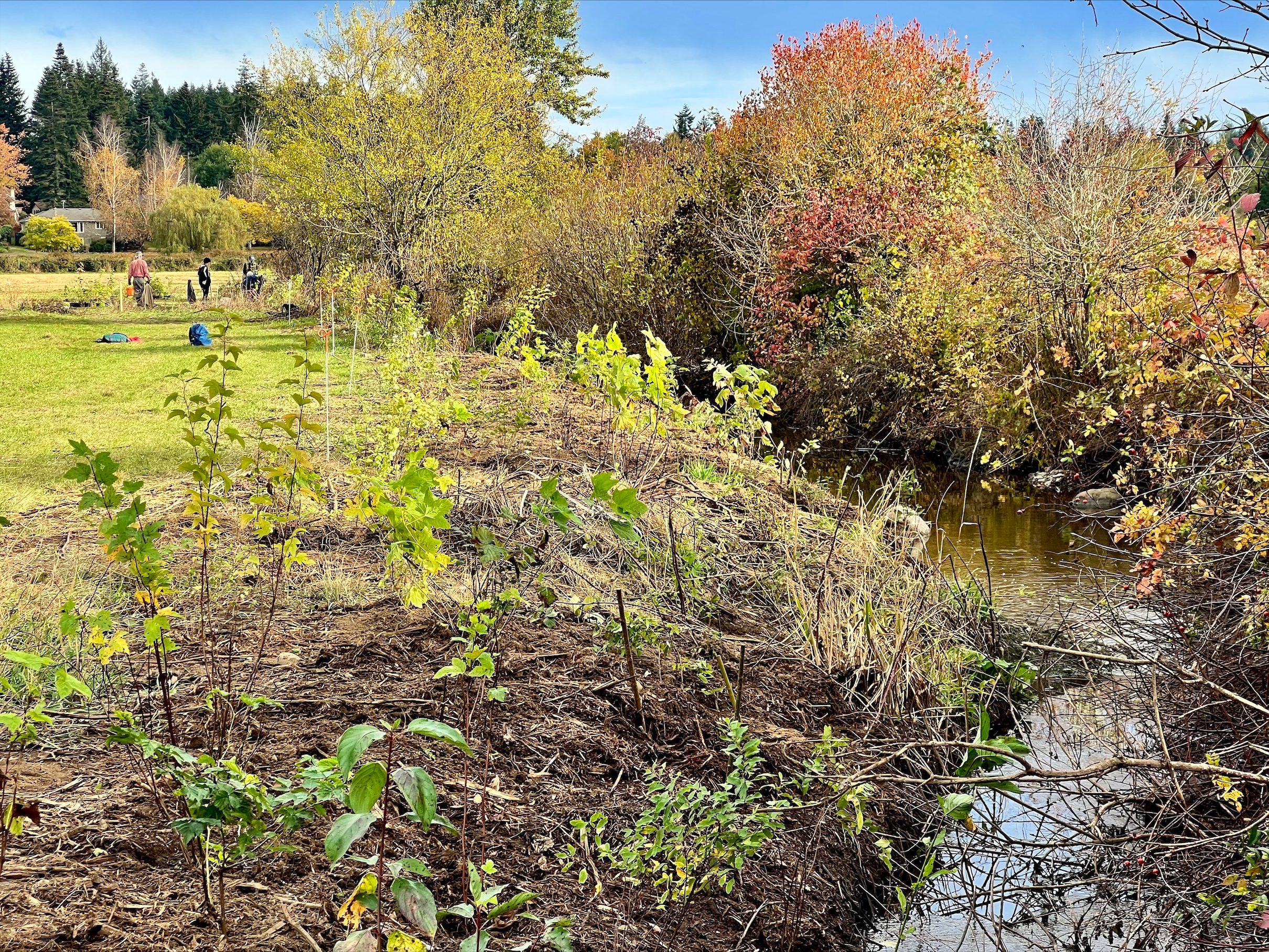What does grass-fed mean?
Grass-fed milk comes from cows who eat primarily – you guessed it – grass.
Grass-fed farming practices are important for their health and ecological benefits. We believe human health is dependent on the health of the soil, animals and ecosystems that we are a part of.
Research shows that higher concentrations of Omega-3 fatty acids promote healthy hearts and brains, especially in growing kids. More than 60% of fatty acids in grass are Omega 3s, which cows convert into rich and creamy milk with a golden hue. In fact, the cream on top of our yogurt is golden because it is from grass-fed cows!

We are proud to source our milk from two 3rd generation family farms on Vancouver Island that are committed to no-till farming and together maintain over 1,000 acres of green pasture for their herds.
Between April and October, cows graze outside in the fields. Throughout the ‘inside’ season, when cows prefer to be out of the rain and off the soggy fields, they eat dried grass (hay) and silage (fermented grass). Year-round, fifteen to twenty percent of the herd’s diet includes ground grains such as barley and supplements for optimal health. This is different from grass-fed cows that are raised for meat or cows raised on pasture in warmer places like California. Canadian dairy cows require extra energy for milk production and to live well in our cold climate. Their health depends on it!
We take time to get to know our farmers, who share a passion for sustainability and land stewardship.
Maintaining pasture and grass-fed farming practices helps:
- capture carbon in the soil
- builds soil ecology
- promotes biodiversity
- maintains habitat for wildlife, including birds, small rodents and mammals, as well as riparian zones for fish, frogs and insects.

